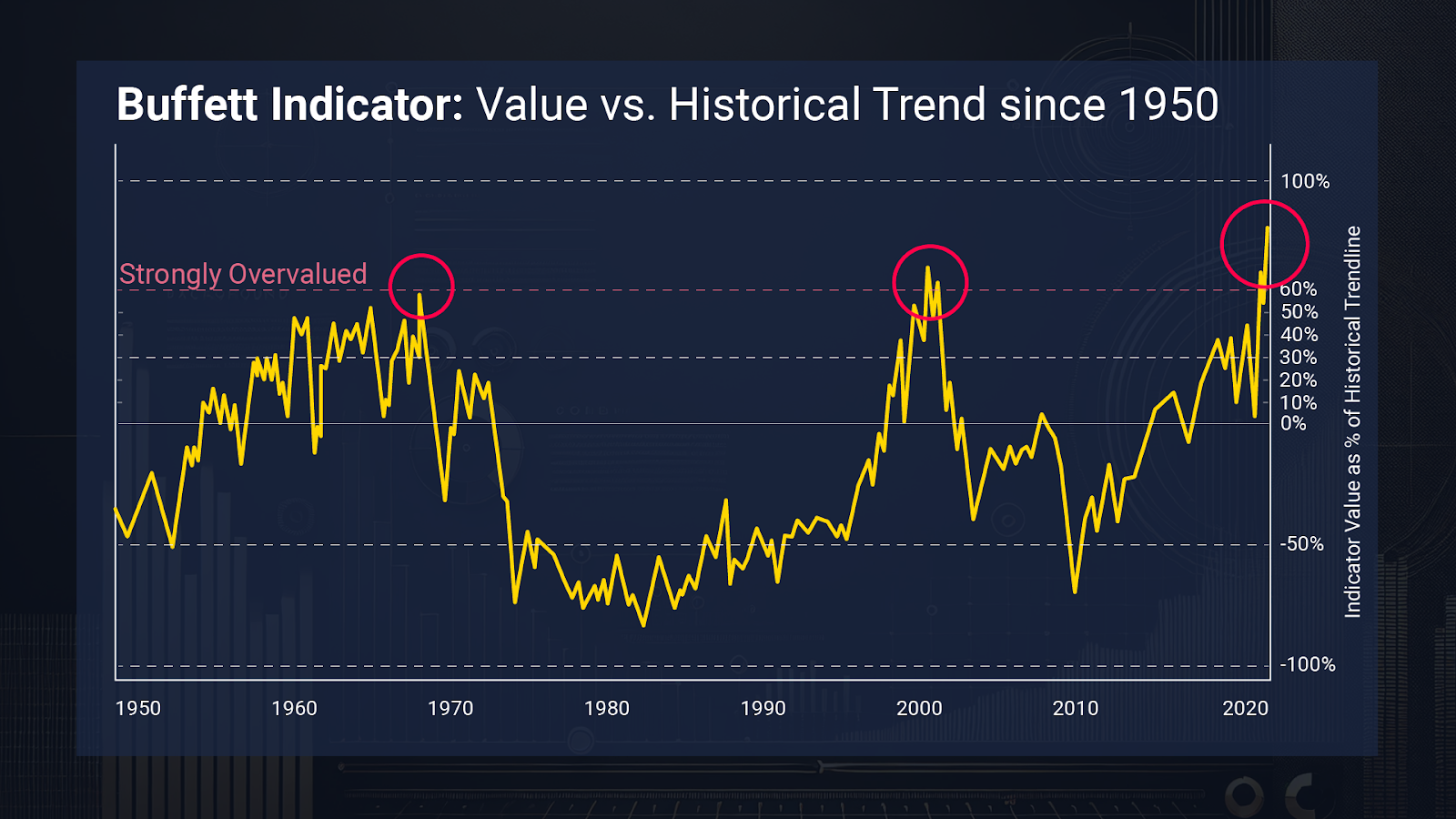Issue #67, Volume #2

Nvidia Is Changing The World In Ways That Are Very Hard To Believe
This is Porter’s Daily Journal, a free e-letter from Porter & Co. that provides unfiltered insights on markets, the economy, and life to help readers become better investors. It includes weekday editions and two weekend editions… and is free to all subscribers.
| Nvidia grew revenue 69%… If you haven’t read The Parallel Processing Revolution, we urge you to do so… Industries and sovereign powers are building enormous data centers… It is Intel, Microsoft, and Cisco Systems wrapped up into one company… China and the U.S. trade deal is (reported) done… |
I couldn’t believe it.
Two weeks ago, Nvidia (NVDA), already one of the largest businesses in the world, announced that it grew revenue by 69% year-over-year. It sold $44 billion worth of its state-of-the-art GPU computer chips at gross margins above 60%. That’s despite taking a $4.5 billion charge against earnings relating to sanctions against China. These incredible margins powered net income of $18.7 billion, leading to more than $14 billion in share repurchases – in the quarter.
About a year ago, we published The Parallel Processing Revolution. If you haven’t read it, I’d urge you to do so. Nvidia is changing the world in ways that are very hard to believe, unless you understand that its technology has unlocked a virtual Pandora’s box of computing power into the world with unprecedented continual improvements to performance. This combination of never-seen-before computing power and never-seen-before annual increases to performance has the impact of delivering decades worth of innovation, each year.
Nvidia’s latest chip, the Blackwell B200, is up to 4x faster than the previous Nvidia artificial-intelligence (“AI”) chip, the H100. But that doesn’t really explain what’s happening. It’s because these chips all function in parallel that allows dozens of these chips, linked together, to perform computing tasks at a scale and speed that was unimaginable even a decade ago.
Nvidia’s leading product has a catchy name: “Nvidia GB200 NVL72.” This is 36 Blackwell B200 chips linked together in a single rack. This creates 130 terabytes per second of throughput, enabling a total computer power of 1.44 exaflops per second.
What’s that mean? Well, supercomputers used to be measured in how many “floating point” operations they could process per second. In short, how many individual 0 / 1 choices they could process per second. A petaflop is a unit of computing speed that’s equal to 10 the 15th power, or one thousand million million.
Ten years ago, the most powerful computer in the world, the Tianhe-IA computer at the National Supercomputer Center, had a peak computer power at 2.566 petaflops.
Nvidia’s new GB200 NVL72 racks are roughly 1,000x more powerful.
And the hyperscalers – businesses like Amazon (AMZN), Microsoft (MSFT), CoreWeave (CRWV), and OpenAI – are deploying nearly 1,000 NVL72 racks per week. Microsoft, for example, has already deployed tens of thousands of Blackwell GPUs and will ramp to hundreds of thousands by the end of this year.
Why? Because the impact of this almost-inconceivable compute power is a 30-fold improvement to what’s called “inference results.” That’s how fast AI can figure out a key benchmark (known as Lama 3.1). In short, it’s how fast these computers can think.
These massive improvements in Nvidia’s leading GPU line led to Blackwell being the company’s fastest ever sales ramp, with a 73% increase to revenue on these kinds of data center chips over the last year.
These massive leaps forward in computing power are creating a global arms race as the leading businesses in virtually every industry and the leading sovereign powers have begun to build enormous data centers – AI factories. As Nvidia explained on its most recent conference call:
The pace and scale of AI factory deployments are accelerating with nearly 100 NVIDIA-powered AI factories in flight this quarter, a two-fold increase year-over-year, with the average number of GPUs powering each factory also doubling in the same period. And more AI factory projects are starting across industries and geographies. NVIDIA’s full stack architecture is underpinning AI factory deployments as industry leaders like AT&T, BYD, Capital One, Foxconn, MediaTek, and Telenor, are strategically vital sovereign clouds like those recently announced in Saudi Arabia, Taiwan, and the UAE. We have a line of sight to projects requiring tens of gigawatts of NVIDIA AI infrastructure in the not-too-distant future.”
The ongoing parallel-processing computer revolution is the most powerful technological change of all time.
Its most profound expression over the next decade will be the rollout of autonomous robotics. Nvidia recently built the world’s first open, fully customizable foundation model for humanoid robots, enabling generalized reasoning and skill development, a project called GR00T N1.
But machines that can think and create autonomously will change every industry.
Yum! Brands, the world’s largest restaurant company (KFC, Pizza Hut, Taco Bell), is launching Nvidia AI into 500 of its restaurants this year and expanding to 61,000 restaurants over time to streamline order-taking, optimize operations, and enhance service.
In the automotive industry, Nvidia’s chips are powering self-driving cars – sales of self-driving cars are up 72% year over year. In healthcare, Nvidia’s technology will be transformative as faster and more powerful computers improve drug discovery and testing and robotics changes surgery dramatically.
This ongoing revolution will continue to be led by Nvidia because its pace of innovation is unmatched. The company is already testing its next generation chipset (GB300), which will deliver a 50% improvement to compute power. It’s been designed to allow “drop in” deployment, with the same physical footprint and electrical specs as the current racks.
But Nvidia’s ultimate control – like Microsoft’s – lies in software. Nvidia controls the software (CUDA) needed to apply the incredible power of its chips to general computing applications.
You can think of Nvidia as being Intel, Microsoft, and Cisco Systems wrapped up in only one company. Nvidia created the parallel-processing revolution – the most powerful technological innovation in history. And it will control it for at least the next decade and probably much longer.
It’s difficult – or impossible – to predict how much longer Nvidia can continue to grow at this pace. But one thing is certain: over the next decade the parallel-processing revolution will continue to create wealth at a pace never seen before in human history and a lot of value will accrue to Nvidia.
We think it’s a must-own stock.
The Big Secret On Wall Street subscribers… look for a more detailed review of Nvidia in tomorrow’s issue.
History Says Gold Wins When This Signal Flashes — and It’s Flashing Now
Every time the Buffett Indicator has hit extreme levels, stocks have crashed — and gold has dominated the decade that followed. Today, the Buffett Indicator is at its highest reading in history… and Buffett himself is sitting on an unprecedented $325 billion cash pile. Sources say he’s preparing to deploy it — not into stocks, but into gold. Garrett Goggin has uncovered which gold company could be his next big move.
Three Things To Know Before We Go…
1. The U.S. and China trade deal is (reportedly) done. In a Truth Social post this morning, President Donald Trump announced that the U.S. and China have agreed to a new trade framework, pending final approval from both countries’ leaders. Under the deal, the U.S. will impose a 55% tariff on Chinese goods, while China will levy a 10% tariff on American exports. In a key concession, China has agreed to resume supplying the U.S. with critical magnet and rare earth minerals. In return, Chinese students will be allowed to study at American colleges and universities. While Chinese tariffs will remain significantly higher than they were prior to “Liberation Day,” the agreement is a strategic win for the U.S. in securing access to vital resources that will be critical in supporting the parallel-processing revolution we wrote about above.
2. Inflation surprises to the downside… again. This morning, the Bureau of Labor Statistics reported that the consumer price index (“CPI”) rose 0.1% month-over-month (2.4% year-over-year) in May versus Wall Street expectations of a 0.2% increase. Core CPI – which excludes food and energy prices – also rose 0.1% month-over-month (2.9% year-over-year), below expectations of 0.3%. In short, despite fears that tariffs would push consumer prices higher, inflation has continued to diverge from the 1970s path we’ve been tracking. Still, given the potential for further tariff volatility, the market believes the Federal Reserve is unlikely to cut interest rates when it meets next week.
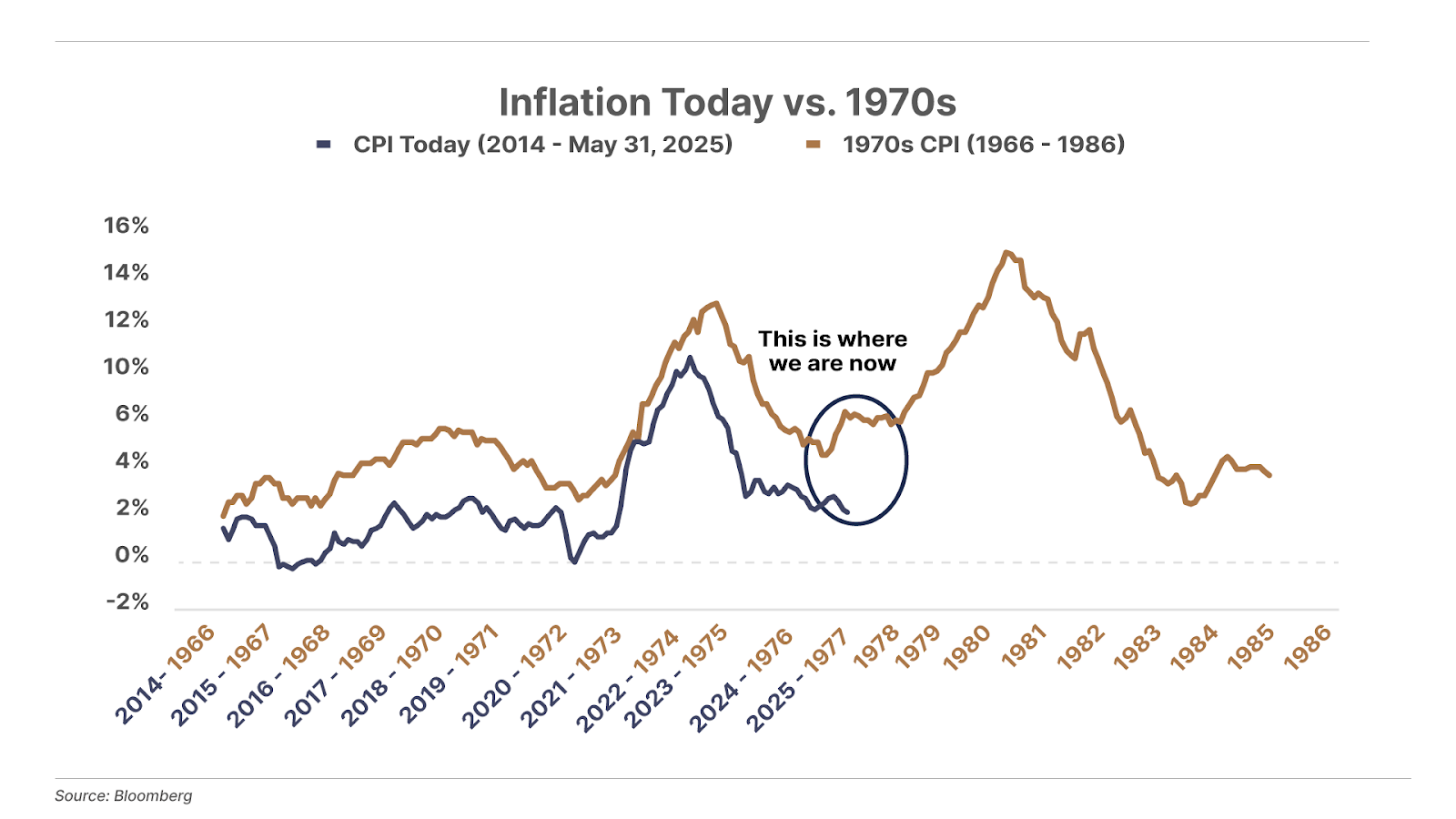
3. Housing inventory piles up across the South. The housing shortage has turned into a housing glut across key areas of the South. This includes Florida, where active home sales listings have jumped 32% since last year to 181,822 in May – 34% above pre-COVID levels. In Texas, the for-sale inventory in Dallas is 30% above 2019 levels, and up 5x from 2021. And in Austin, home prices have fallen 7% since last year, one of the largest drops nationwide. The glut is a result of overbuilding in response to the post-COVID population boom in states like Texas and Florida. As the population influx has since stalled or reversed in some cities, like Austin, there’s now an excess housing supply and falling prices in these areas.
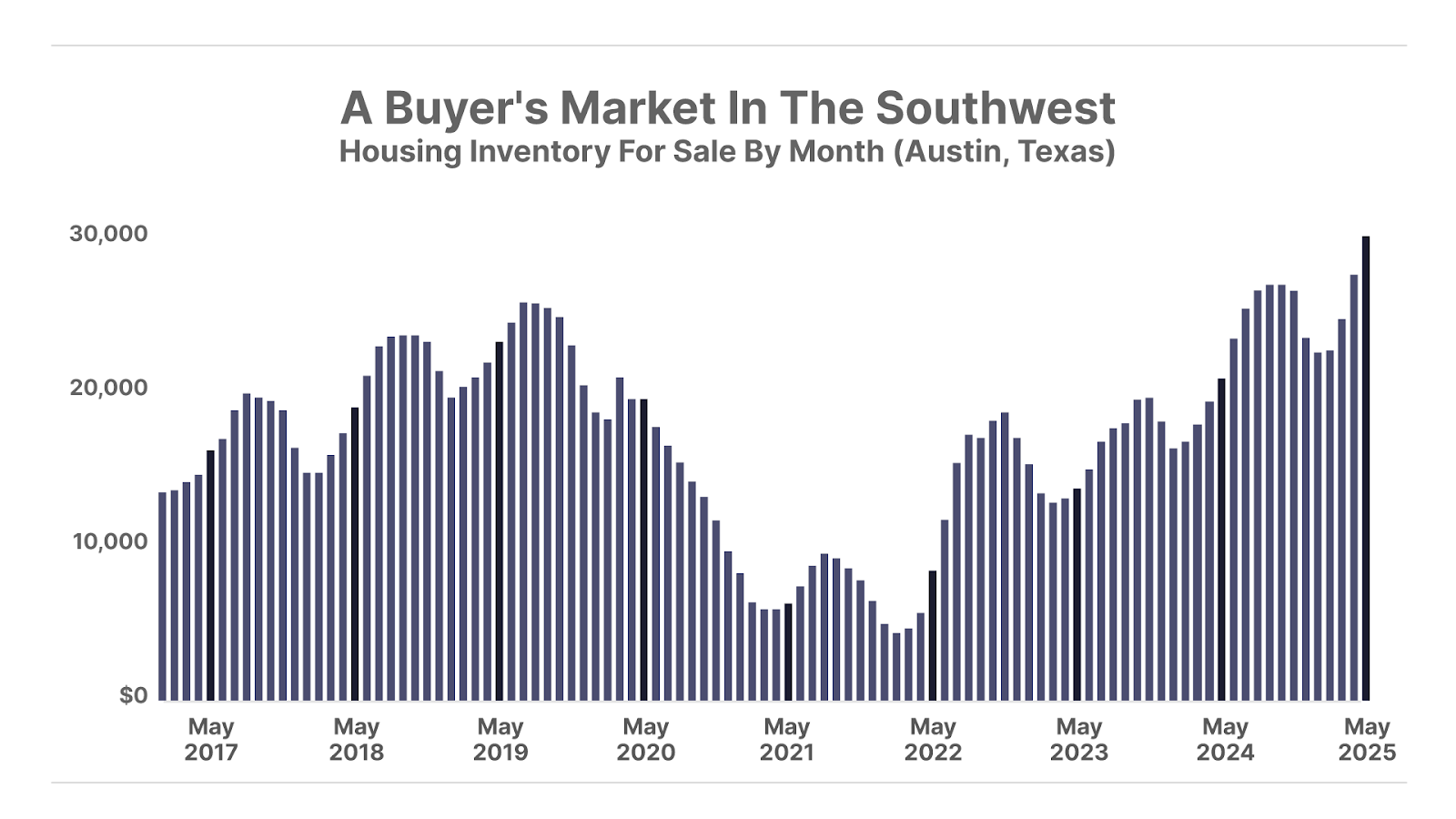
Tell me what you think: [email protected]
Good investing,
Porter Stansberry
Stevenson, Maryland
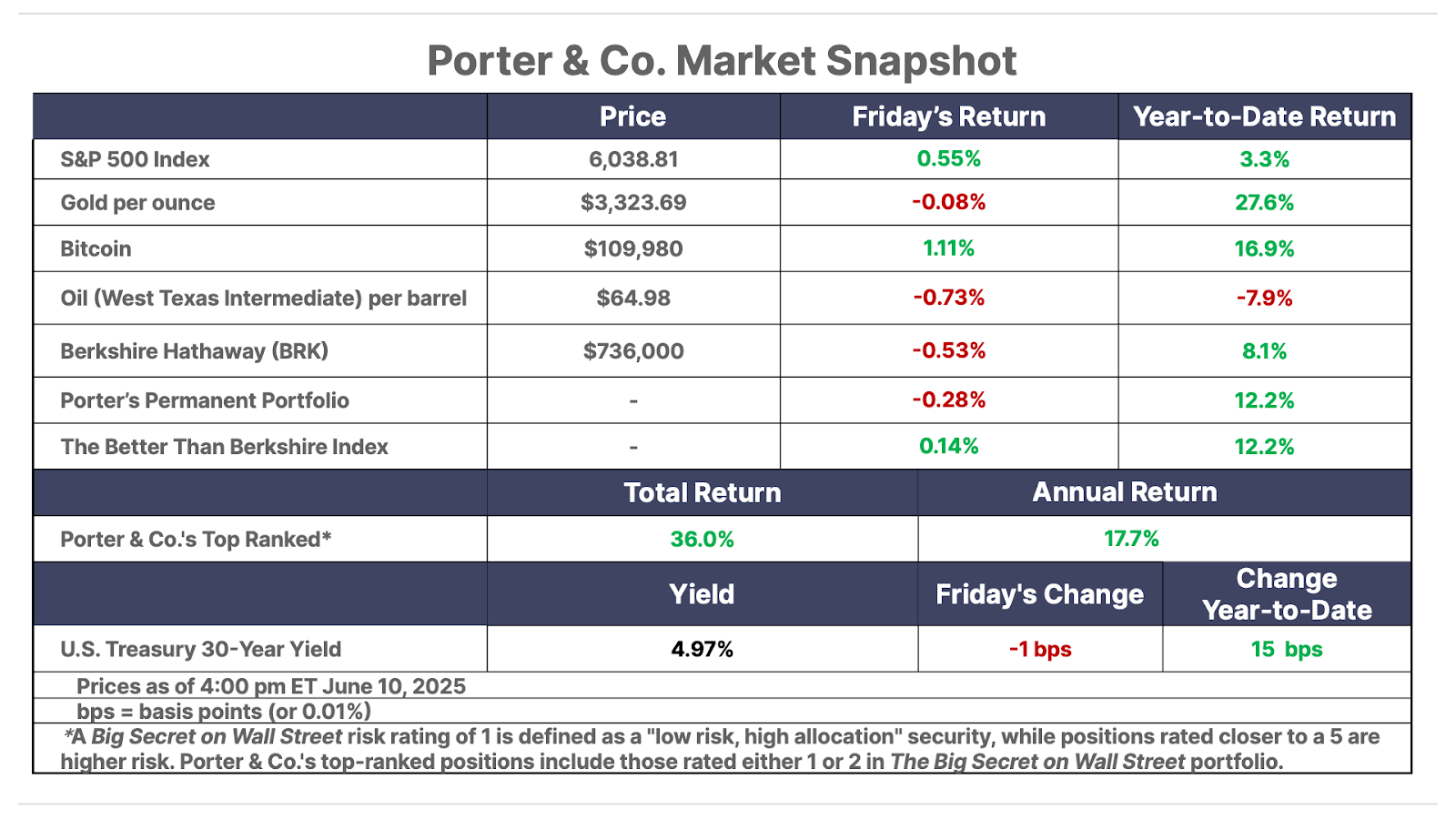
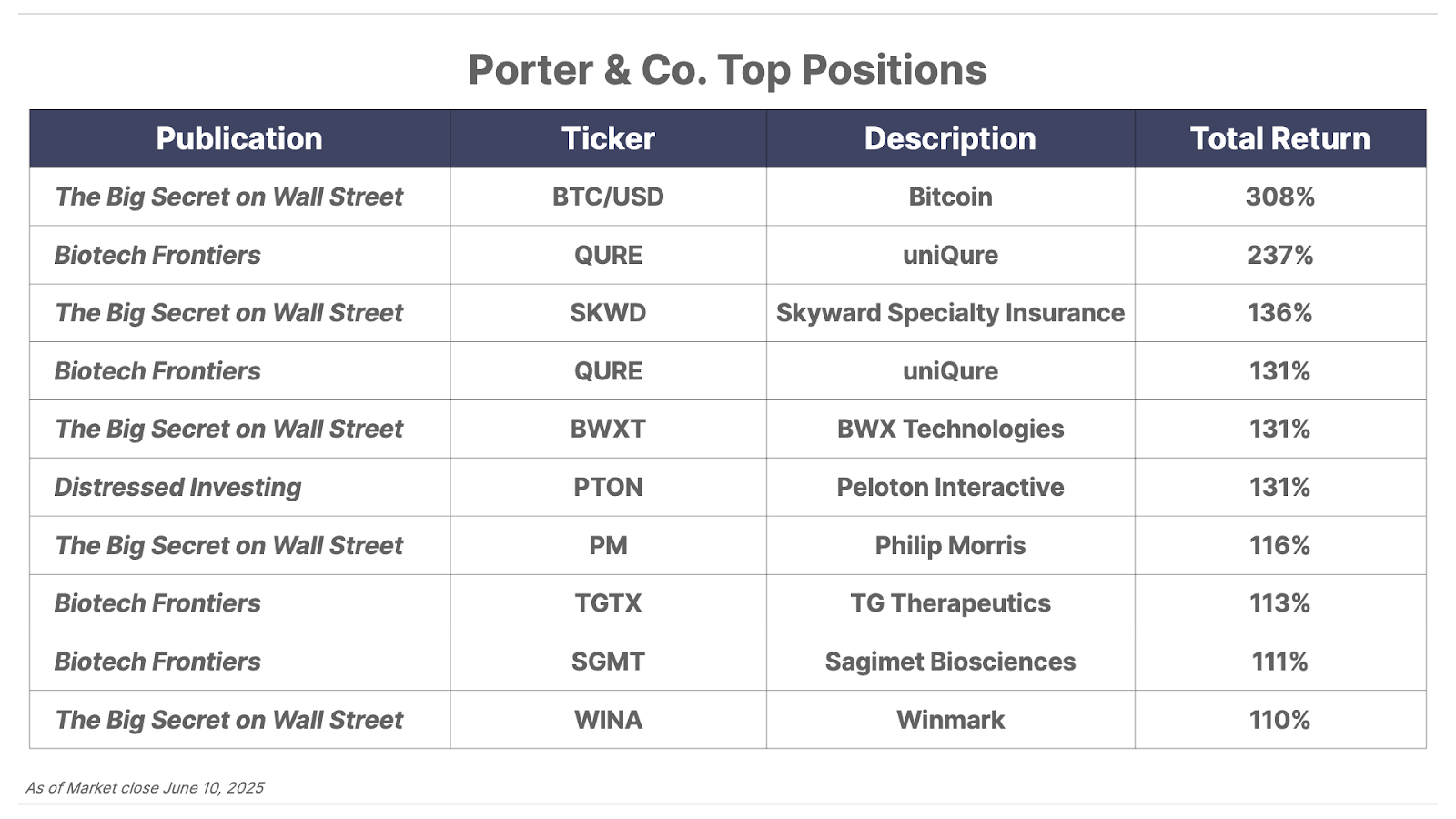
Please note: The investments in our “Porter & Co. Top Positions” should not be considered current recommendations. These positions are the best performers across our publications – and the securities listed may (or may not) be above the current buy-up-to price. To learn more, visit the current portfolio page of the relevant service, here. To gain access or to learn more about our current portfolios, call Lance James, our Director of Customer Care, at 888-610-8895 or internationally at +1 443-815-4447.
